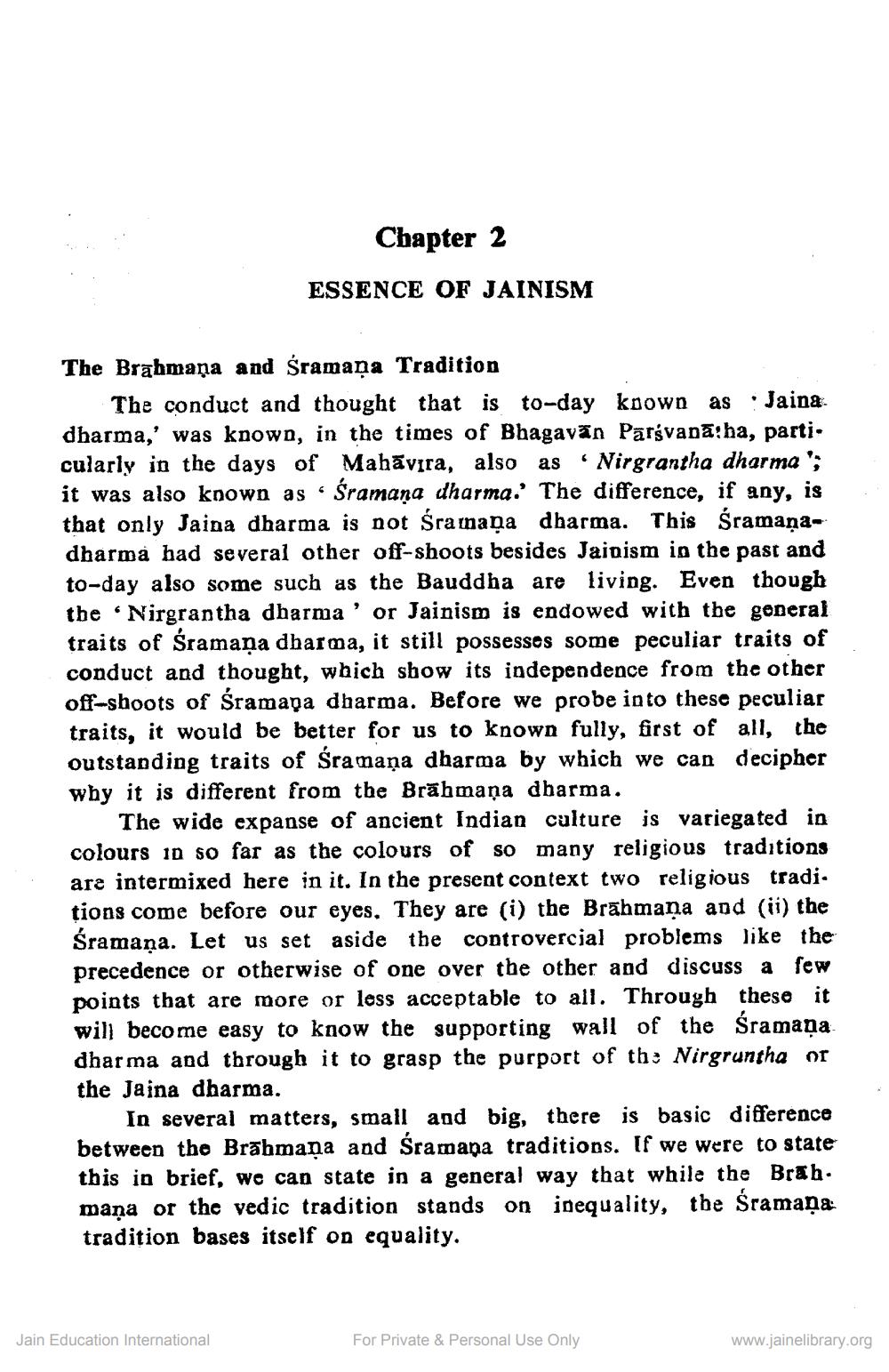________________
Chapter 2
ESSENCE OF JAINISM
The Brahmaņa and śramaņa Tradition
The conduct and thought that is to-day known as : Jaina. dharma,' was known, in the times of Bhagavān Parsvanā:ha, parti. cularly in the days of Mahāvira, also as Nirgrantha dharma '; it was also known as · śramana dharma.' The difference, if any, is that only Jaina dharma is not śramaņa dharma. This śramaņa dharma had several other off-shoots besides Jainism in the past and to-day also some such as the Bauddha are living. Even though the 'Nirgrantha dharma’ or Jainism is endowed with the general traits of śramaņa dharma, it still possesses some peculiar traits of conduct and thought, which show its independence from the other off-shoots of śramapa dharma. Before we probe into these peculiar traits, it would be better for us to known fully, first of all, the outstanding traits of Sranaņa dharma by which we can decipher why it is different from the Brāhmaṇa dharma.
The wide expanse of ancient Indian culture is variegated in colours in so far as the colours of so many religious traditions are intermixed here in it. In the present context two religious tradi. tions come before our eyes, They are (i) the Brāhmaṇa and (ii) the Śramaņa. Let us set aside the controvercial problems like the precedence or otherwise of one over the other and discuss a few points that are more or less acceptable to all. Through these it will become easy to know the supporting wall of the śramana dharma and through it to grasp the purport of the Nirgruntha or the Jaina dharma.
In several matters, small and big, there is basic difference between the Brāhmaṇa and Sramana traditions. If we were to state this in brief, we can state in a general way that while the Brah. maņa or the vedic tradition stands on joequality, the Sramaņa tradition bases itself on equality.
Jain Education International
For Private & Personal Use Only
www.jainelibrary.org




